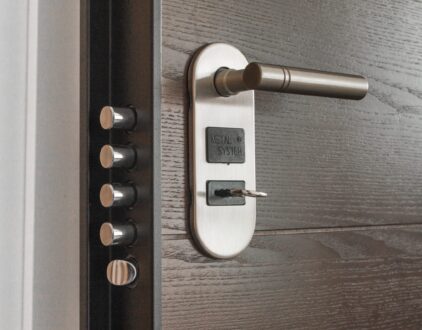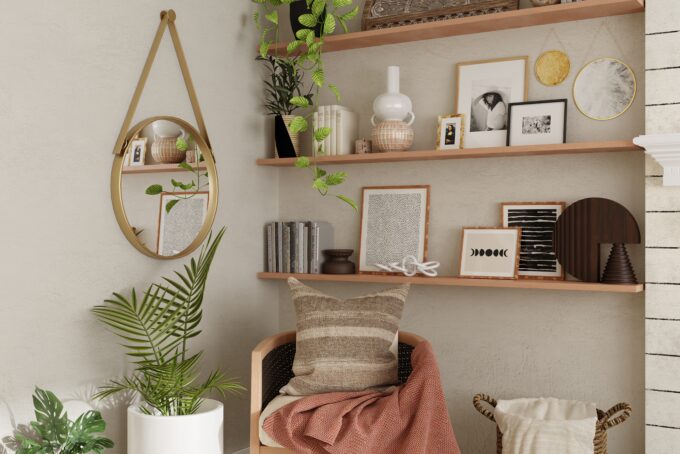You did it—you reached a major milestone, expertly navigating a new language that includes terms like “escrow” and “comparable market analysis.” You became a homeowner. It’s a notable accomplishment, especially considering the median age range of homeowners is only increasing. But with a shiny new mortgage and unexpected expenses that could include pool cleaning services and landscaping, you might have realized the cost of being a homeowner stretches beyond that hefty downpayment. If you’re starting to freak out about it—don’t worry. There’s plenty you can do to help pad your savings and budget to keep you on track with your financial goals.

Know Your Homeownership Costs
In apartment living, if your AC decides to quit on you, the solution is as simple as giving your landlord a call and getting replacement parts or an entire unit. As a homeowner, those costs fall entirely on you. Here are some expenses you’ll want to think about.
Mortgage
Your mortgage payment will be the centerpiece of your financial life as a homeowner. It’s not just about paying down the principal; there’s the interest too. This obviously varies on a number of factors.
Property Taxes
Think of property taxes as your “neighborhood dues,” or an annual membership that affords you the ability to live in the location you want. Although this only comes once a year, the median that homeowners pay runs about $2,690 in property taxes a year.
Insurance
A necessary expense, but costly nonetheless. Homeowners insurance is your safety blanket in the world of homeownership. It’s there to catch you when life throws unexpected surprises.
Maintenance
Repairs and maintenance are part and parcel of owning a house. This can range from appliance repairs, lawn and pool care, plumbing, and electrical.

Setting SMART Financial Goals
If you’ve never budgeted before, a good approach to start is with SMART goals—Specific, Measurable, Achievable, Relevant, and Time-bound.
- Specific: Instead of vaguely saying, “I want to save money,” be specific like, “I want to save $10,000 for a home improvement project within the next 12 months.”
- Measurable: Goals need metrics. How else will you know if you’re getting closer to that $10,000 mark? Keep track of your progress.
- Achievable: While aiming high is great, be realistic. If you’re making $50,000 a year, saving $100,000 in six months doesn’t quite math. Set goals that challenge you but are within reach.
- Relevant: Make sure your goals align with your homeownership needs. Don’t set a goal to buy a yacht when you have a leaky roof. Prioritize!
- Time-bound: A goal without a timeline is like a recipe without instructions. It might never become a reality. Set a deadline to keep yourself accountable.
The Art of Budgeting
Budgeting isn’t about chaining yourself to a financial prison; it’s about channeling your spending in a way that aligns with your goals. It’s like training a mischievous pet—you want it to behave but still enjoy its freedom.
- The 50/30/20 Rule: Break down your monthly income into three categories—50 percent for essentials like mortgage, utilities, and groceries, 30 percent for wants like dining out and entertainment, and 20 percent for savings and debt repayment.
- Budgeting Apps: Thanks to smartphones, there’s an app for everything, including budgeting. Apps like Mint, YNAB (You Need A Budget), and Personal Capital can help you track your spending and stay on top of your financial game.
- Automatic Transfers: Set up automatic transfers to your savings or investment accounts. It’s like rewarding yourself with a treat for being financially responsible.
- Emergency Fund: Life has a knack for throwing curveballs. An emergency fund is your financial safety net, ready to rescue you from unexpected expenses.

Home Improvement Dreams
Owning a home means you have the power to turn it into your dream space. But dreams cost money, and we’re here to help you turn those dreams into reality without breaking the bank.
- Prioritize Projects: Make a list of all the improvements you want to make, from fixing the leaky faucet to adding a home theater. Then prioritize them based on urgency and budget.
- DIY vs. Hiring Pros: Some projects are perfect for a DIY enthusiast, while others require the expertise of professionals. Don’t be a hero; call in the cavalry when needed.
- Shop Smart: Look for sales, discounts, and second-hand options when shopping for home improvement materials. It’s like treasure hunting but for your home.
Invest in Your Future
Saving money is fantastic, but investing it can make it grow. It’s like planting a money tree, except it’s not a fairy tale.
- Retirement Accounts: Contribute to your retirement accounts like a 401(k) or IRA. It’s like giving a high-five to your future self.
- Diversify Investments: Don’t put all your financial eggs in one basket. Diversify your investments to spread risk and potentially earn higher returns.
- Consult a Financial Advisor: If you’re unsure about investing, consider consulting a financial advisor. They can help you create an investment strategy that aligns with your financial goals.
popular posts
- 1It’s Black Business Month, So Let’s Go Shopping and #BuyBlack!
- 2These Home Decor Items Will Instantly Make Your Space Look Outdated
- 3Black-Owned Home Decor Stores To Support Across the United States
- 4A Look Inside Elon Musk's Tiny $50,000 House
- 57 Black and Multicultural Designers To Follow For Design Inspo
homeownership
Home is a safe place where relationships flourish and the cornerstone of neighborhoods. We believe it’s the setting that surrounds your phenomenal story.

Up to 30% Off: Top of the Line Home Security Systems
by Arielle Clay | January 19, 2023

Front Yard Curb Appeal Tips for the Spring Season
by Melody Brown | January 19, 2023
Spaces
Whether it’s luxury or ease, every area of your home should be as fabulous and unique as you.
FOLLOW ALONG ON INSTAGRAM
#homeandtexture
Find us on social for more home inspiration where culture, personal style, and sophisticated shopping intersect to help you create a home where you love to live.




